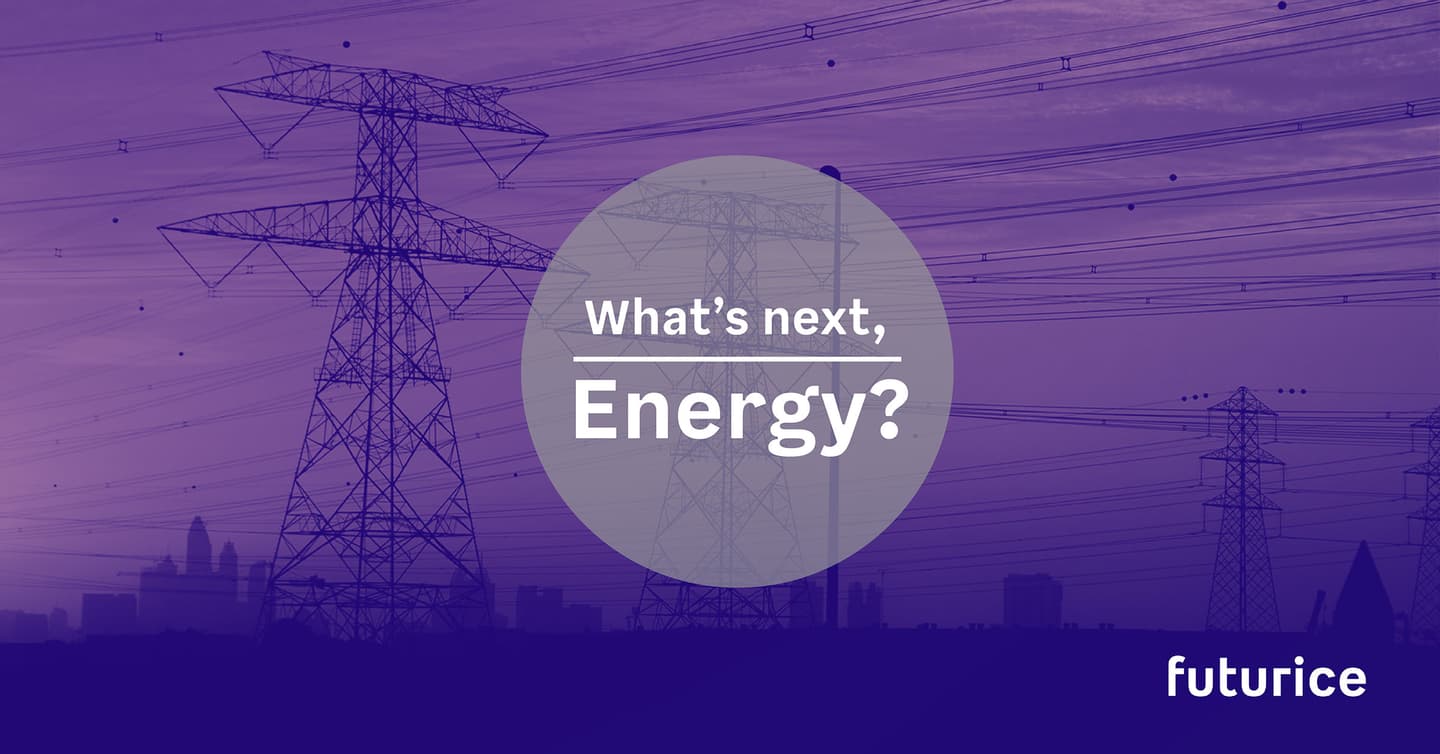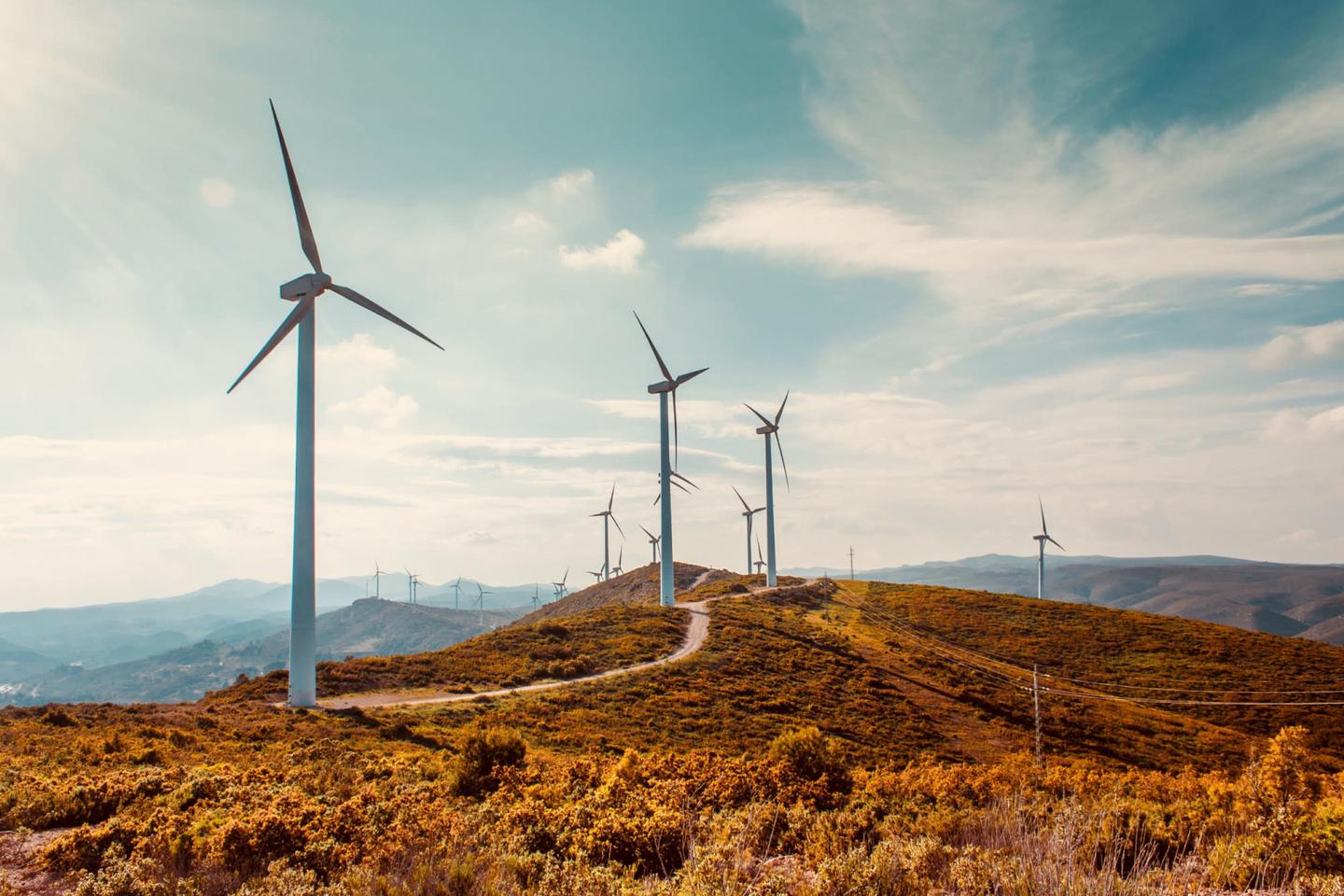What’s next, Energy? - An Interview with Lauri Anttila
Before joining Futurice, Lauri Anttila worked for several years with some of the biggest players in the Energy sector. At companies like Vattenfall or Elenia, he worked in IT development teams with varying tasks and responsibilities - from creating work order management solutions to developing digital service channels. During this time he got to see all the processes and IT systems that used to run “the grid” while being in close cooperation with many different stakeholders.

Providing electricity to everybody nonstop is a major responsibility. What is the biggest misconception in energy management today?
There’s a lot of talk around Smart Grids, using electric vehicles as energy reserves, managing energy use in a more sustainable manner and other similar topics. However, in most cases the reality is still quite far away. Some tests like Tesla’s battery farm in Australia were a success , but most places are still technologically far from gaining the benefits of scale. Either it’s the lack of infrastructure, technical knowhow, legislation or a combination of all of these.
Energy innovation has increased at a rather steady speed over the past decade. In order to reach the energy demands for the future - what role will data play in speeding this up?
When new energy sources such as solar and wind are added, predicting power generation becomes more and more relevant to meet the demand. Just analysing historical data is not enough, since multiple different factors are in play when it comes to future consumption: How is the weather looking? Is it a public holiday and are many companies closed? Is the consumer on holiday and spending time elsewhere?
Based on predicted demand, the industry can also offer targeted solutions for consumers, e.g. by encouraging them to not use energy during a certain time. This opens new business models for many energy companies.
What will happen to energy companies that are not able to adapt?
I see the highest risk for smaller energy companies that do not have the necessary resources to invest in the technical solutions which would be needed to enable new business models and two-way communication with end users. Unless these smaller companies team up and co-create suitable solutions, I would suspect bigger companies to acquire the smaller ones.
As demand response is rising fast in the EU, the need for interaction between distribution companies and energy traders is growing. What complications does this have and how can we solve them?
Distribution companies hold the keys when we want demand response to work on scale. They control a huge number of smart meters that allow individual households to be used as demand response reserves. Currently, the mechanisms for energy traders to tap into the distribution company owned devices is almost non-existent. Some parties have been piloting demand response by installing additional hardware to end user premises, but this solution doesn’t really scale. Utilising the existing smart meter infrastructure is the key but requires standardized mechanisms to exchange information between all parties.
At the same time, all of this needs to be easy for the end customers too. How will they benefit if they e.g. let someone control their water heaters? Companies need to point out the benefits - both environmental and financial ones - and set up an easy to use solution.
Cloud is said to increase growth, agility and efficiency in organisations. What role does cloud play in the future of energy?
Many energy companies are still a bit scared to utilize the cloud. Traditionally, all critical infrastructure has been running in their own data centers (or in their private cloud such as OpenStack, VMWare). However, as the world becomes more complex, the effort that it takes just to keep existing solutions running locally has become very difficult to manage.
By taking advantage of global scale cloud solution providers such as Amazon or Microsoft, energy companies can build highly available and scaling solutions while reducing the amount of time (and money) used to simply keep the infrastructure up and running.
Some companies are still worried about security and compliance but usually those worries are based on gut feeling originating from the early days of the cloud. Running critical infrastructure on cloud is basically even more secure than doing it inhouse. Just ask yourself: How much money do companies like Amazon or Microsoft invest in security? And how much are you? Getting your own datacenter the level of security these big players have would be simply too expensive for most companies.
Thinking cloud as an extension to your on-premise data center is a good start, it’s just another rack of servers, but with limitless capacity and a lot of out-of-the-box functionality companies have used to build from ground up themselves in the past.
Customer centricity is an integral part of business growth. How can companies leverage data to increase their customer success?
On a high level, using data e.g. to prevent power outages is really the biggest thing (even it’s quite invisible to the end users). Electricity is even more important than internet access and if the power goes out, so does customer satisfaction.
If we look at end users, individuals could get an alert when there are unusual energy consumption patterns (e.g. something wrong with their devices/physical premises) or a notification that suggests more cost efficient energy products for specific premises.
The environmental side is another thing. How is your energy consumption affecting the world and could you do something differently to do your part? Many grocery chains are already publishing your purchase history and its CO2 impact - could energy companies do the same?
The Paris agreement was created as a signed effort between 195 countries to keep the world's temperature from rising by 2°C. Can data help to reach this goal?
Sure! The demand response already mentioned is one way to use energy wisely, but also a lot of energy we use goes to waste and tapping into the consumption patterns could provide eye opening findings on our behaviour. Utilising home automation and other new smart devices can really cut our consumption which is good not only for the environment but also for our wallets.
Looking at the future of energy businesses - where do you see the biggest changes ahead?
Energy companies need to embrace the utilization of cloud platforms to really build scalable and highly available digital solutions. In addition, they will need to deepen the cooperation between energy sellers and distributors in more standardized ways, since building custom point-to-point solutions will not work out. A push from bigger players in the market could set an example and encourage companies to share innovative solutions for everyone. We need to be more proactive, as relying solely on laws and regulation tends to be pretty slow in a world where technology is moving at unprecedented pace.
To learn more about our energy approach, check out our energy page.
 Christina KleinMarketing & Communications Manager
Christina KleinMarketing & Communications Manager

